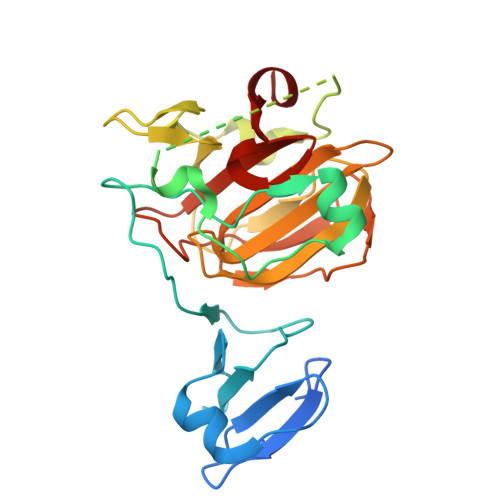Latent LytM at 1.3A resolution.
Odintsov, S.G., Sabala, I., Marcyjaniak, M., Bochtler, M.(2004) J Mol Biology 335: 775-785
- PubMed: 14687573
- DOI: https://doi.org/10.1016/j.jmb.2003.11.009
- Primary Citation of Related Structures:
1QWY - PubMed Abstract:
LytM, an autolysin from Staphylococcus aureus, is a Zn(2+)-dependent glycyl-glycine endopeptidase with a characteristic HxH motif that belongs to the lysostaphin-type (MEROPS M23/37) of metallopeptidases. Here, we present the 1.3A crystal structure of LytM, the first structure of a lysostaphin-type peptidase. In the LytM structure, the Zn(2+) is tetrahedrally coordinated by the side-chains of N117, H210, D214 and H293, the second histidine of the HxH motif. Although close to the active-site, H291, the first histidine of the HxH motif, is not directly involved in Zn(2+)-coordination, and there is no water molecule in the coordination sphere of the Zn(2+), suggesting that the crystal structure shows a latent form of the enzyme. Although LytM has not previously been considered as a proenzyme, we show that a truncated version of LytM that lacks the N-terminal part with the poorly conserved Zn(2+) ligand N117 has much higher specific activity than full-length enzyme. This observation is consistent with the known removal of profragments in other lysostaphin-type proteins and with a prior observation of an active LytM degradation fragment in S.aureus supernatant. The "asparagine switch" in LytM is analogous to the "cysteine switch" in pro-matrix metalloproteases.
Organizational Affiliation:
International Institute of Molecular and Cell Biology, ul. Trojdena 4, 02-109 Warsaw, Poland.

















